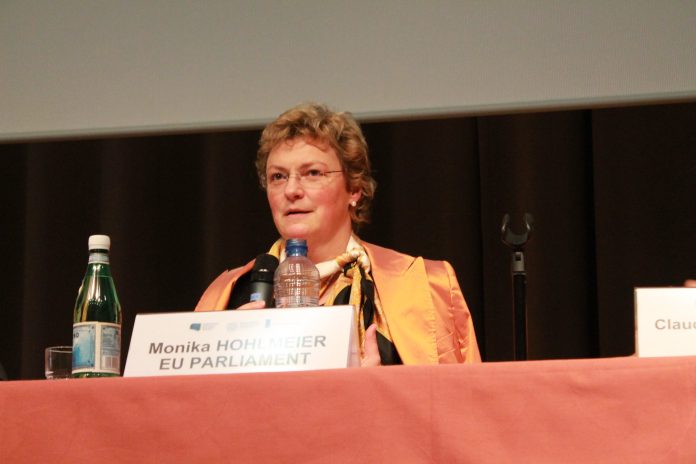Incomparable reporting systems, fragmented data, technical and legal barriers make it cumbersome to identify the top ultimate beneficiaries of EU funds.
The preliminary study, conducted by CEPS researchers and discussed by the Budgetary Control Committee on Monday, “is the first step towards clearly describing and analysing the problem. Having that would allow us to develop a robust system for the future to better protect EU taxpayers’ money” – said the committee Chair Monika Hohlmeier (EPP, DE).
“The lack of reliable and comparable data on the final beneficiaries of EU funds has been an ongoing concern for the Budgetary Control Committee. There is currently no EU-wide interoperable and digital system in place to provide a clear overview of how EU money is distributed to the final beneficiaries. This opaqueness makes the EU budget vulnerable and prone to misuse, fraud and the risk that conflicts of interest might go undetected”, she concluded.
In the debate, the Budgetary Control Committee members pushed for even more transparency and to be able to compare data on who are the final beneficiaries of EU public money. They said this would expose cases of fraud and conflicts of interest that may occur in several countries and allow for them to be investigated. A balance must be found between an efficient and transparent data mining system and legal drawbacks or technical hurdles, they said.
The European Commission’s representatives agreed with the Committee’s request for more transparency, but pointed out several legal obstacles to reforming the EU reporting system. They mentioned the principle of subsidiarity, personal data protection, the need to distinguish data that can be made publicly available and those that are needed for administrative and judicial audit and control of spending. They also raised the argument of additional administrative burden.
The study on the 50 largest beneficiaries of EU CAP and cohesion funds
Presented at the meeting by one of the authors, Willem Pieter De Groen, the study analyses about 10 million beneficiaries of the Common Agriculture Policy (CAP) in 2018 and 2019 and more than 500 000 projects that received cohesion funds between 2014 and 2020.
The study assesses almost 300 national reporting systems in use in the 27 EU member states and in the UK. It confirms MEPs’ concerns that such a high number of mostly incomparable methodologies, at least regarding the cohesion funds, makes it almost impossible to know with certainty who, in the end, gets EU money. The report recommends:
setting up a common EU reporting system that covers all the cohesion funds; adding to the existing system clear indicators that allow the real beneficiary (e.g. public or natural person) to be identified; linking the EU database with the national registers of the ultimate beneficial owner (UBO); extending the reporting period to minimum five years.
In the EU, the direct recipients of cohesion and CAP funding are included on publicly available lists. However, these data are not published in a uniform and interoperable manner. Furthermore, they only list direct beneficiaries who are not always the final beneficiaries, thereby preventing MEPs from having a precise overview.
In its last discharge report, Parliament called for new systems to be put in place to avoid fraud and the uneven distribution of EU subsidies. MEPs also asked the Commission to propose a maximum amount that a natural person can receive in direct payment, thereby making it impossible for an individual to receive subsidies of hundreds of millions of euros.
MEPs also asked for a real-time IT information system on payments from the EU agriculture and cohesion funds to be established, including information on which individuals are the final beneficiaries, and, in the meantime, asked for the EP to be informed who the fifty largest EU fund recipients across the EU are.

